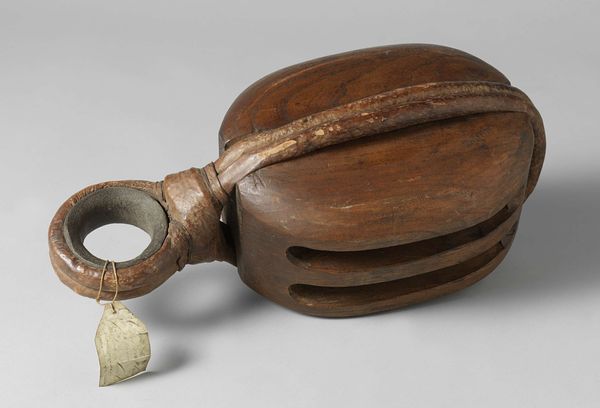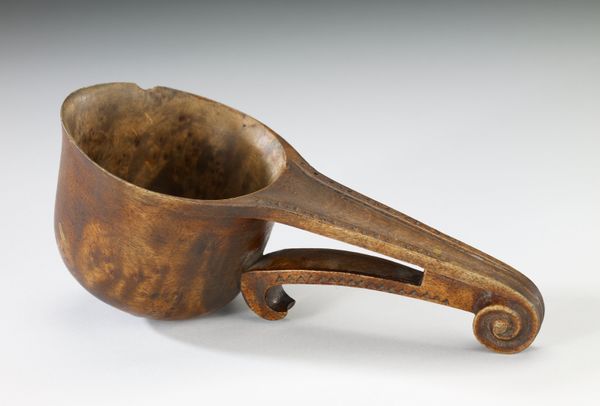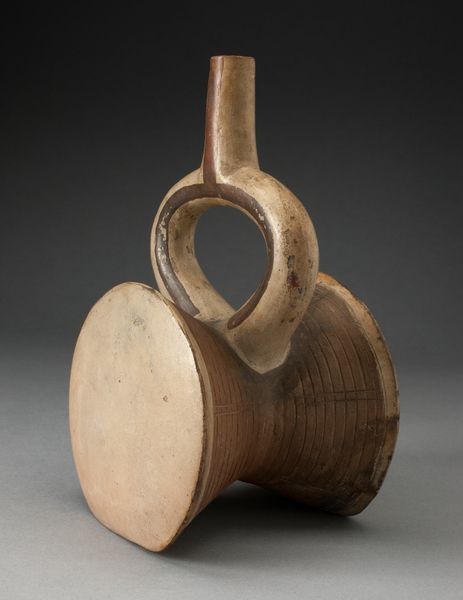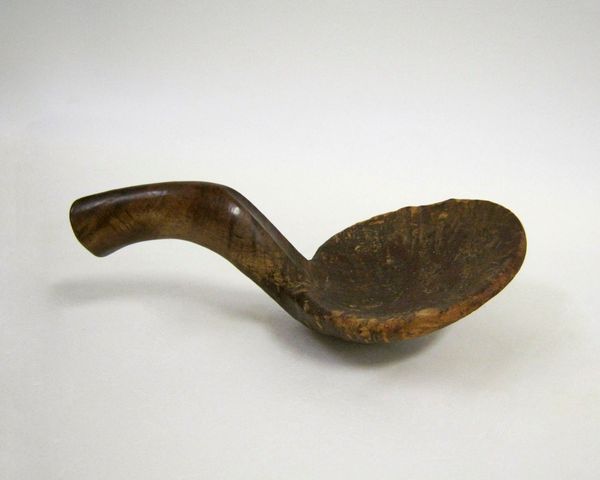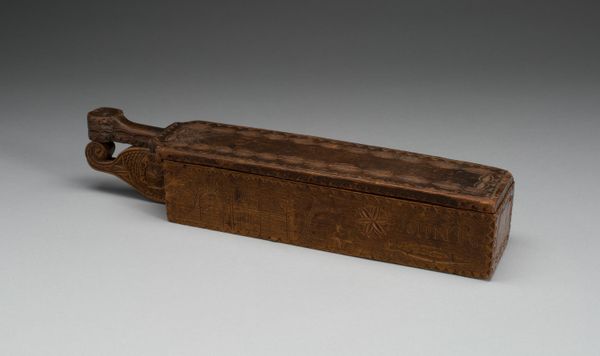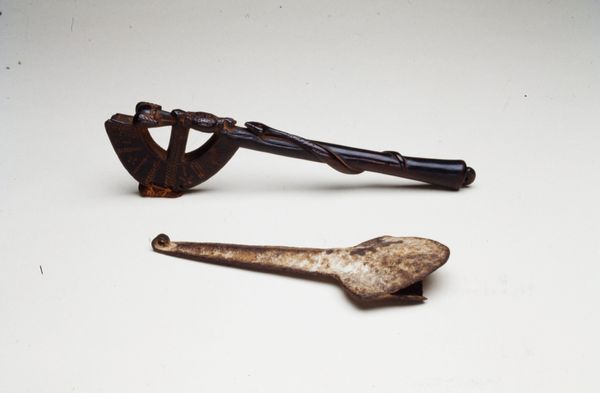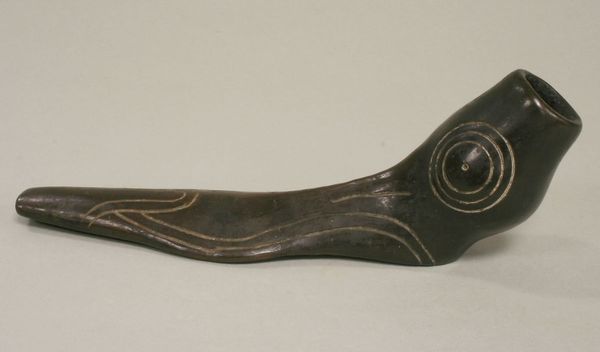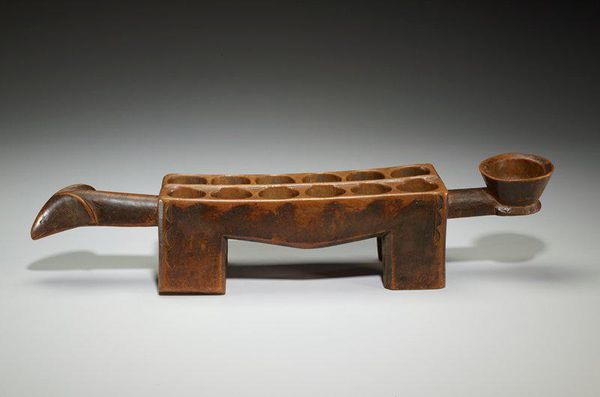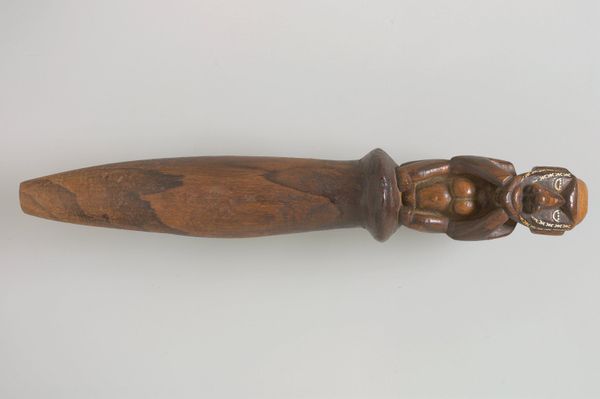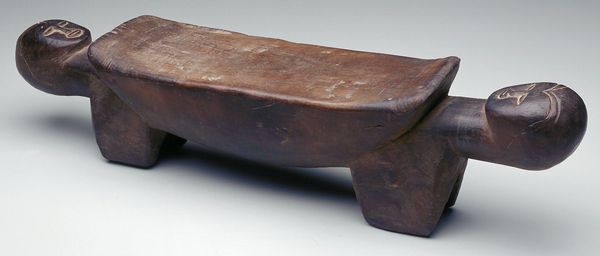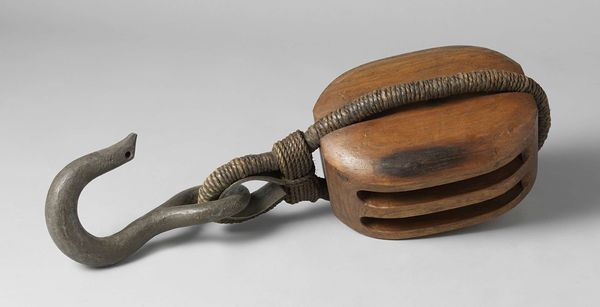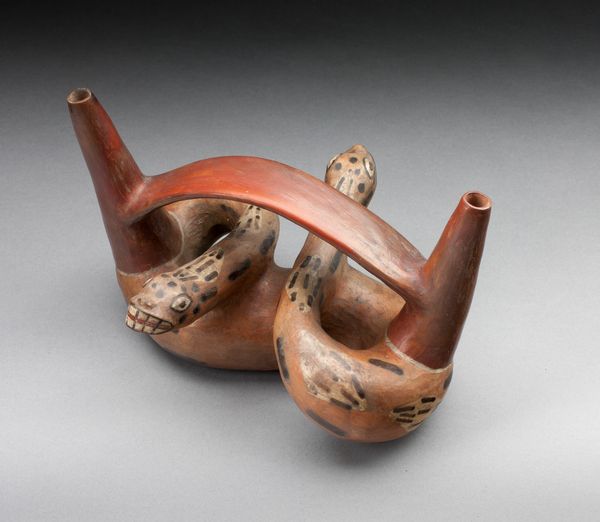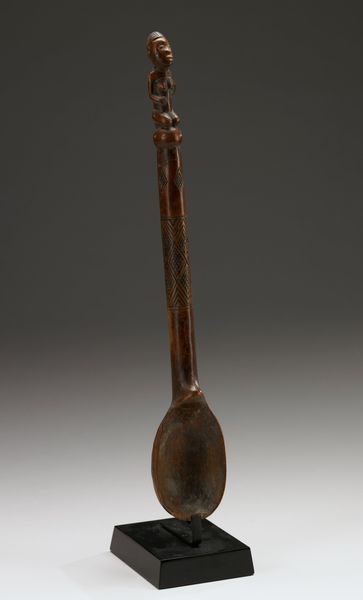
carving, sculpture, wood
#
carving
#
sculpture
#
figuration
#
sculpture
#
wood
#
indigenous-americas
Dimensions: 8 1/2 x 27 1/4 x 12 in. (21.59 x 69.22 x 30.48 cm)
Copyright: Public Domain
Curator: Ah, here we have an intriguing example of indigenous art: a wooden bird headdress, believed to have been crafted sometime between the 19th and early 20th centuries. Its creator remains anonymous, adding to its mystique. Editor: Mystique is right! I'm immediately struck by the contrast of textures—the smooth, almost mournful curve of the neck, against the carved detail of the wing. There's a real sense of quiet dignity here. Curator: Indeed. As a carved wooden relief sculpture, the headdress occupies a unique space. While its specific origins and the society for which it was created are not explicitly detailed, such pieces often carried profound social and spiritual significance. They were frequently employed in ceremonial contexts. Editor: You know, seeing how the wood has aged and the paint has faded, it feels almost like a memory solidified. Like it's holding stories from countless ceremonies, from dances and rituals we can only imagine. I get this tangible feeling of connection to something ancient. Curator: It's a poignant observation. The carving style, the very deliberate nature of the rendering, points to a sophisticated understanding of avian anatomy translated through the lens of cultural symbolism. These headdresses were rarely mere decoration; they were powerful symbols of status, spiritual connection, and community identity. Editor: And that eye... It’s almost a void, but there’s so much depth. It invites you to project onto it. What does the bird see? What has it witnessed? It makes you wonder about the weight of the traditions it embodies, you know? It isn't simply an artifact; it is a vessel of experience. Curator: Precisely. Analyzing it now within a museum context encourages conversations about how we present and interpret such cultural objects, as well as consider the complex history of their collection and display. Its presence encourages contemplation. Editor: For me, it's a reminder that art can be a bridge across time, whispering secrets about people we'll never meet and beliefs we can only try to understand. Curator: Absolutely. And perhaps in that attempt, we better understand ourselves, as well. Editor: I'll second that. Thanks to this bird and those who have protected it across time for bringing those stories to light once more.
Comments
Join the conversation
Join millions of artists and users on Artera today and experience the ultimate creative platform.
